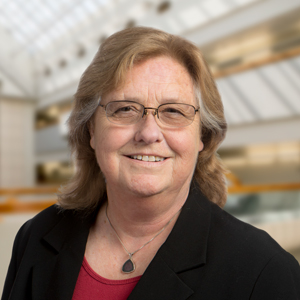Blog
Advancing Cell Therapy Safety and Efficacy: A Deep Dive with Dr. Jeanne Loring
Key Takeaways
- Dr. Jeanne Loring brings a wealth of experience in stem cell research, emphasizing the critical role of gene editing in therapeutic development.
- Dr. Loring’s insights into gene therapies are informed by a deep commitment to innovation and patient safety.
- Comprehensive genome analysis, particularly the detection of structural variants, is integral to the development and quality control of cell therapies.
- Optical Genome Mapping (OGM) is essential for ensuring the genomic integrity of cell therapy products.

Dr. Jeanne Loring – A Vanguard in Stem Cell Science

Dr. Jeanne Loring is a distinguished figure in stem cell research, whose work has been foundational in the field. As a Professor Emeritus at the Scripps Research Institute and a leader in the development of NIH-funded human embryonic stem cells, Dr. Loring’s expertise is unparalleled. Her leadership extends to her role as a founding director of the Center for Regenerative Medicine and as an influential member of scientific and bioethics advisory boards, including Merck KGaA.
Her entrepreneurial ventures, such as Arcos Biosciences and Aspen Neuroscience, reflect her forward-thinking approach to developing therapies for conditions like Parkinson’s disease. Dr. Loring’s research portfolio, which includes work on multiple sclerosis and Fragile X syndrome, demonstrates her commitment to tackling complex genetic disorders. Her collaboration with the San Diego Zoo and the International Space Station underscores the breadth of her interest in applying stem cell research to conservation and space medicine.
A Conversation with Dr. Jeanne Loring
In an enlightening interview session with the Bionano team, Dr. Jeanne Loring shared her insights, drawing from her extensive experience in stem cell research and therapeutic development. She provided an in-depth perspective on the transformative potential of gene editing, the indispensable role of OGM in ensuring the safety and integrity of cell therapies, and the promising future of these therapies in clinical research settings. Dr. Loring’s dialogue with Bionano not only highlighted her expertise but also her vision for the application of these advanced genomic tools in the development of new therapeutic strategies.
Q: What initially motivated you to pursue a career in stem cell research?
My journey into stem cell research was driven by a fascination with the fundamental questions of life and a desire to make a tangible impact on human health. The moment I learned about the ability of stem cells to become any cell type in the body, I saw an opportunity to address some of the most challenging medical conditions. It had the potential to revolutionize medicine and provide hope where there was little that truly motivated me. The field has evolved tremendously since then, and it’s been an incredible experience to be part of that evolution, contributing to the science that could one day alleviate suffering for millions around the world.
Q: You’ve been involved in founding companies like Arcos Biosciences and Aspen Neuroscience. How do these ventures contribute to the field of cell therapy?
Founding these companies has allowed me to translate basic research into tangible therapies. Arcos Biosciences was one of the early endeavors that became part of Viacyte, which is now pioneering cell therapy for diabetes. Aspen Neuroscience is particularly close to my heart, focusing on autologous neuron replacement therapies for Parkinson’s disease. These ventures are not just businesses; they are platforms for innovation that bring us closer to curing debilitating diseases.
Q: Can you tell us more about the therapies you’re currently working on, especially in relation to Parkinson’s disease and multiple sclerosis?
Certainly. With Aspen Neuroscience, we’re developing personalized neuron replacement therapies for Parkinson’s disease. This involves creating induced pluripotent stem cells (iPSCs) from a patient’s own cells, which are then differentiated into dopaminergic neurons and transplanted back into the patient. For multiple sclerosis, we’re exploring how cell therapy can modulate the immune system and potentially repair myelin sheath damage. These are complex conditions, but with each step forward, we’re learning more about how to harness the body’s own potential to heal.
Q: Your collaboration with the International Space Station is fascinating. Can you explain the purpose of sending cells to space and what you hope to learn from this research?
Our work with the International Space Station is truly one of the most exciting aspects of our research. We’re sending cells to space to study the effects of microgravity on cellular behavior, particularly neuroinflammation and the aging process. Microgravity provides a unique environment to observe cellular changes that can inform us about fundamental biological processes. The insights gained could lead to breakthroughs in understanding how cells repair themselves, how they age, and how they can be used in therapies. It’s a testament to the fact that cell therapy research isn’t just about what we can do on Earth—it’s about pushing the boundaries of science to wherever it can take us, even beyond our planet.
Q: Could you discuss the importance of gene editing in the context of cell therapy development?
Gene editing stands at the forefront of cell therapy development. It’s not just about correcting genetic errors; it’s about ensuring the therapeutic cells we develop are optimized for safety and efficacy. This precision is what will drive the next generation of cell therapies from the lab to the clinic.
Q: With the advancements in cell therapy, how do you see the relationship between research and clinical application evolving?
The relationship is becoming increasingly synergistic. As we make advances in research, particularly with tools like Optical Genome Mapping, we’re able to translate those findings into clinical research more rapidly. This means we can iterate on our therapies faster, learn from clinical research outcomes, and refine our approaches. It’s a dynamic, exciting time to be in the field, and the pace of progress is accelerating.
I do think that optical genome mapping is currently the best technology for looking at structural variance. And it’s just obvious there isn’t another way to do it.
— Dr. Jeanne Loring
Q: How does Optical Genome Mapping enhance our capabilities in cell therapy quality control?
Optical Genome Mapping is a transformative tool for quality control. It allows us to examine the genome with unprecedented resolution, ensuring that the therapeutic cells we produce maintain genomic integrity. This is particularly crucial for therapies intended to be lifelong solutions for patients.
Q: In the context of your work, how critical is the role of Optical Genome Mapping in ensuring the quality and safety of these therapies?
It’s absolutely critical. For therapies like the ones, we’re developing for Parkinson’s and multiple sclerosis, we’re dealing with cells that will integrate into the patient’s body and potentially last for years. Optical Genome Mapping gives us the ability to thoroughly analyze these cells before they’re used in a clinical research setting. It’s about ensuring that we’re not introducing any genomic instability that could have adverse effects down the line. It’s a level of scrutiny that’s essential for the responsible development of cell therapies.
The insights Dr. Loring shared during her conversation with the Bionano team provided a comprehensive overview of the current state and the exciting future of cell therapy, gene therapy, and the technologies that will enable the next leaps in innovation and patient care. Her expertise and pioneering work continue to drive the field forward, promising a new era of therapeutic possibilities.




